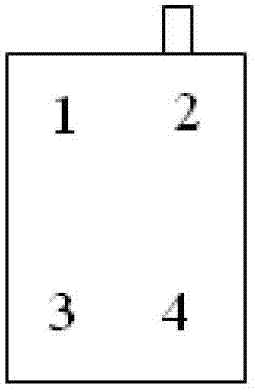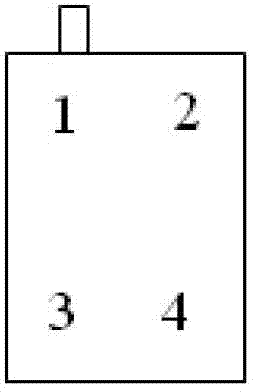Method for pretreating raw polar plates for internal formation
A raw plate and pretreatment technology, applied in the direction of lead-acid battery electrodes, etc., can solve the problems of uneven dispersion of colloidal electrolyte, high temperature of battery acid addition, high formation temperature, etc., to improve capacity consistency and capacity pass rate, The effect of reducing floating powder on the surface and stabilizing temperature change
- Summary
- Abstract
- Description
- Claims
- Application Information
AI Technical Summary
Problems solved by technology
Method used
Image
Examples
Embodiment 1
[0024] Pickling treatment: use low-density 1.08g / mL (25°C) dilute sulfuric acid to completely immerse the plate, the temperature of dilute sulfuric acid is required to be 10°C, the soaking time of the positive plate is 80 minutes, and the soaking time of the negative plate is 40 minutes.
[0025] Secondary drying treatment: After the soaking time is completed, the plate is taken out and placed on the curing rack (the method is the same as that of the coated plate and placed on the curing rack), enters the drying room, and adopts temperature segmental drying, the first segment is 45 ° C × 3h, the second section 65℃×6h, the third section 35℃×3h.
[0026] After the plate is dried, we take a sample to test the content of the plate material. The plate before the above treatment is also analyzed for the substance content:
[0027] Positive plate: test at 4 points respectively (for distribution of test points, see figure 1 ), the results are shown in Table 1:
[0028] Table 1
[...
Embodiment 2
[0065] Pickling treatment: Use dilute sulfuric acid with a density of 1.18g / mL (25°C) to completely immerse the plate. The temperature of the dilute sulfuric acid is required to be 25°C. The immersion time for the positive plate is 60 minutes, and the immersion time for the negative plate is 30 minutes.
[0066] Secondary drying treatment: After the soaking time is completed, the plate is taken out and placed on the curing rack (the method is the same as that of the coated plate and placed on the curing rack), enters the drying room, and adopts temperature segmental drying, the first segment is 50℃× 3h, the second section 75℃×6h, the third section 40℃×3h.
[0067] After the plate is dried, we take a sample to test the content of the plate material. The plate before the above treatment is also analyzed for the substance content:
[0068] Positive plate: test 4 points separately (test points such as figure 1 Shown), the test results are shown in Table 5:
[0069] table 5
[...
Embodiment 3
[0106] Pickling treatment: Use dilute sulfuric acid with a density of 1.28g / mL (25°C) to completely immerse the plate. The temperature of the dilute sulfuric acid is required to be 35°C. The immersion time for the positive plate is 40 minutes, and the immersion time for the negative plate is 20 minutes.
[0107] Secondary drying treatment: After the soaking time is completed, the plate is taken out and placed on the curing rack (the method is the same as that of the coated plate and placed on the curing rack), enters the drying room, and adopts temperature segmental drying, the first segment is 55 ° C × 3h, the second section 85℃×6h, the third section 45℃×3h.
[0108] After the plate is dried, we take a sample to test the content of the plate material. The plate before the above treatment is also analyzed for the substance content:
[0109] Positive plate: test at 4 points respectively (for distribution of test points, see figure 1 ), the test results are shown in Table 9: ...
PUM
 Login to View More
Login to View More Abstract
Description
Claims
Application Information
 Login to View More
Login to View More - R&D
- Intellectual Property
- Life Sciences
- Materials
- Tech Scout
- Unparalleled Data Quality
- Higher Quality Content
- 60% Fewer Hallucinations
Browse by: Latest US Patents, China's latest patents, Technical Efficacy Thesaurus, Application Domain, Technology Topic, Popular Technical Reports.
© 2025 PatSnap. All rights reserved.Legal|Privacy policy|Modern Slavery Act Transparency Statement|Sitemap|About US| Contact US: help@patsnap.com



